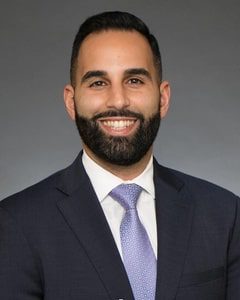|
Getting your Trinity Audio player ready...
|
 Our community is about to lose another one of its own.
Our community is about to lose another one of its own.
Nicole, the receptionist at our firm, grew up in Miami, went to school here, and has worked with us for three years. She and her boyfriend have begun the process of looking for a home in Miami-Dade County.
A couple of weeks ago, I found out that Nicole is leaving her job because she is moving farther north. Nicole told me that whether it is renting or making an offer on a home or condo, she is getting outbid at every turn and cannot find anything affordable. Nicole’s story is not uncommon, especially for first-time homebuyers in Miami-Dade County.
Miami’s housing market is now the second most expensive in the country. According to the 2021 Housing Affordability Index, the median income in Miami is $39,049, while median home prices are $549,000. Miami households should expect to spend about 81.6 of their median income on homeownership costs.
City of Miami Mayor, Francis Suarez, touts Miami as the new hub for tech and is urging companies from all over the world to work and play here. This is incredible news for those that see Miami as the international gateway to the Americas.
However, Miami does not run without its working class. This is obvious from looking around any restaurant, hotel, or tourism attraction in Miami Beach, Brickell, Coral Gables, or South Miami, to name a few. The incredibly hardworking people working in these establishments also call this beautiful place home.
The 2020 US Census data shows an 8.2 percent increase in the population of Miami-Dade County. This data does not accurately account for the numerous people that made a mad dash to South Florida during the pandemic — and stayed.
The people relocating here from the Northeast and California mostly work in banking or tech and have maintained their above-average salaries. They are mostly filling up the luxury condos in Brickell and buying up single family homes in the sought-after neighborhoods of Coconut Grove, Coral Gables, and the like. As a result, the real estate market has been on fire during the pandemic.
Fueled by those relocating to Miami and the desire to get out of apartment buildings while many worked and attended school from home, Miami-Dade County saw a 33 percent increase in the median cost of a single-family home from $375,000 in January 2020 to $500,000 in May 2021. This has made affordable housing unattainable for most of the working class in Miami-Dade County.
This is not a new problem. In 1992, the Florida legislature created the Sadowski Trust Fund by increasing the documentary stamp tax to help fund the State Housing Initiative Partnership (SHIP) and State Apartment Incentive Loan (SAIL) Program. SHIP helps with down payments and closing cost assistance for first time homebuyers, new affordable housing construction, home repair, eviction prevention, foreclosure prevention, and other local initiatives. SAIL is directed to apartment rental assistance.
While these funds have enjoyed bi-partisan support in the state legislature, the funds have been “diverted” many times to use for other initiatives. According to the president of the Florida Housing Coalition, Jaimie Ross, the fund has been the target of routine “sweeps” since 2002 and has lost somewhere between $2 billion and $3 billion. Along with the billions of dollars being diverted were tens of thousands of newly constructed homes, thousands of jobs, and a positive economic impact in Miami and the rest of Florida.
To help address this problem, Senate Bill 2512 recently was passed to prohibit lawmakers from redirecting Sadowski funds to other initiatives. Under the new law, the Sadowski Fund’s total revenue is now permanently cut in half: one half is allocated to two environmental initiatives and the other half will remain exclusively for housing assistance programs — the original purpose of the Sadowski Fund. Yes, you read that right. Our state legislature decided that the solution for affordable housing, job creation, and making our economy more robust was to gut a program that works for everyone and makes our state better.
Although I am happy that our state legislator wants to address environmental issues, I do not think it should be at the expense of those working hard to buy a home for the first time or live near work. While touted as providing increased protection for the Sadowski Fund, the idea that the only way to protect it is by cutting it in half is counterintuitive.
Instead of addressing the environmental issues head on and allocating new funds for these initiatives, the legislature has decided to give with one hand and take away with the other.
The solution should have been simple: fully appropriate the Sadowski fund and stop diverting the funds.
Miami-Dade County, fundamentally a tourism destination, depends on its culturally and socio-economically diverse population, especially those in the working class and service industry. Access to affordable housing is essential to the success and resilience of this city but Tallahassee has lost sight of that. We must push our local and state leaders to make affordable housing a priority as the population of Miami-Dade County continues to expand and, in turn, relies more heavily on those other than the 1 percent.
Adam Benna is an attorney who lives in South Miami. Adam has worked on Capitol Hill in Washington, DC, and for the Miami Dade State Attorney’s office and now is at the firm Gaebe Mullen Antonelli & DiMatteo.





